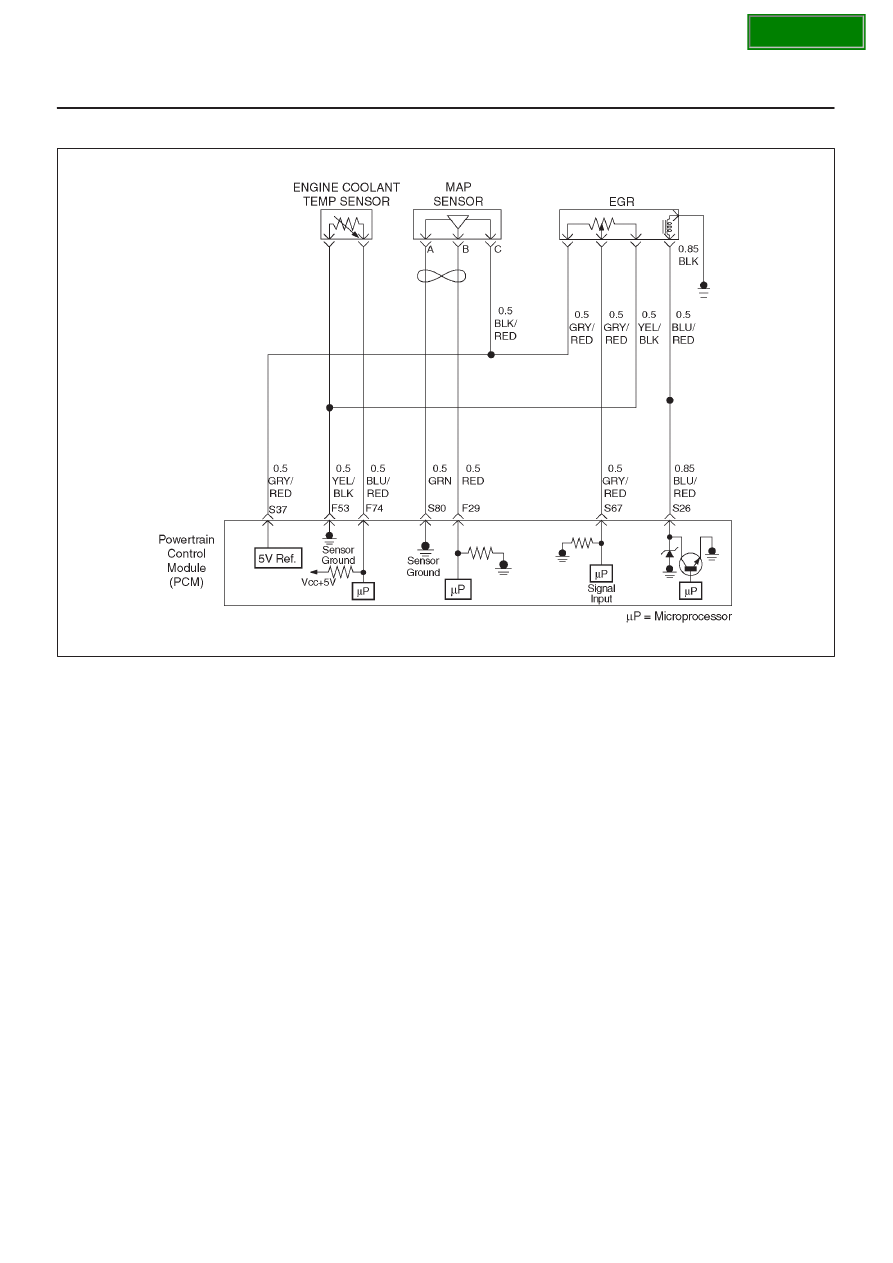Content .. 1508 1509 1510 1511 ..
Opel Frontera UE. Manual - part 1510

6E–255
6VD1 3.2L ENGINE DRIVEABILITY AND EMISSIONS
Diagnostic Trouble Code (DTC) P0406 EGR High Voltage
060R100136
Circuit Description
The powertrain control module (PCM) monitors the EGR
valve pintle position input to ensure that the valve
responds properly to command from the PCM. If current
pintle position voltage indicates more than 4.8 V and last
more than 10 seconds, then the PCM will set DTC P0406.
Conditions for Setting the DTC
D
Ignition voltage is between 11 and 16 volts.
D
Intake Air temp is more than 3
°
C (37.4
°
F).
D
EGR pintle position is more than 99% and last more
than 10 sec.
Action Taken When the DTC Sets
D
The PCM will ON the MIL after second trip with
detected the fault.
D
The PCM will store conditions which were present
when the DTC was set as Freeze Frame and in Failure
Records data.
Conditions for Clearing the MIL/DTC
D
The PCM will turn the MIL “OFF” on the third
consecutive trip cycle during which the diagnostic has
been run and the fault condition is no longer present.
D
A history DTC P0402 will clear after 40 consecutive
warm-up cycles have occurred without a fault.
D
DTC P0404 can be cleared by using the Tech 2 “Clear
Info” function.
Diagnostic Aids
Check for the following conditions:
D
Poor connection or damaged harness – Inspect the
wiring harness for damage. If the harness appears to
be OK, observe the EGR actual position display on the
Tech 2 while moving connectors and wiring harnesses
related to EGR valve. A change in the display will
indicate the location of the fault.